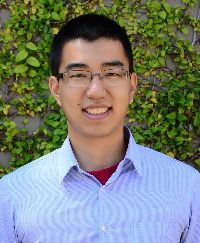 The Electrical Engineering department recently welcomed Jonathan Kao to its faculty. Assistant Professor Kao began teaching his first course at UCLA this quarter. He is teaching a graduate class on neural signal processing and machine learning. Topics he will cover in the class include basic neuroscience and statistical methods to decode and analyze neural activity.
The Electrical Engineering department recently welcomed Jonathan Kao to its faculty. Assistant Professor Kao began teaching his first course at UCLA this quarter. He is teaching a graduate class on neural signal processing and machine learning. Topics he will cover in the class include basic neuroscience and statistical methods to decode and analyze neural activity.
Professor Kao comes to UCLA from Stanford University where he completed his undergraduate degree, his PhD and his postdoctoral work. All his degrees were in electrical engineering, but while pursuing his PhD he began studying neuroscience as well.
At Stanford University, Professor Kao researched how the brain’s motor areas generate movements. By gaining a better understanding of what brain signals lead to movement, Professor Kao contributed to research aimed at creating a system which can assist people suffering from amyotrophic laterals sclerosis (ALS) or paralysis. People with ALS or paralysis suffer from profound movement deficits because their brains cannot communicate with their bodies to generate movement. They have functioning brains and functioning bodies, but the two cannot communicate due to diseased or severed pathways.
Professor Kao’s research helped to develop a system which can enable a person suffering from ALS or paralysis to move a cursor on a computer screen. The system directly reads from a person’s still functioning brain and bypasses the person’s diseased or severed pathways. When a person thinks about moving the cursor, the system uses an algorithm to translate the brain’s neural activity into cursor movements. Using the cursor, a person can answer questions by selecting letters to spell out words. Such a system incorporates recording electrodes implanted on a patient’s brain via neurosurgery. Once implanted, the electrodes record the activity of neurons in the brain. This neural activity is translated into the movement of a cursor on a computer screen.
Professor Kao primarily worked on designing algorithms which decoded brain activity, translating the neural activity into the movements of a cursor. He worked on developing these algorithms by analyzing neural activity in monkeys.
Professor Kao said he was drawn to neuroscience due to the complexity of the human brain. Electrical engineers can build computers which do incredible things, he said, but the brain can operate in fundamentally unique and elegant ways. He added that he wanted to learn how the brain was performing certain computations so efficiently and effectively.
At UCLA, Professor Kao is currently researching and developing techniques to elucidate computational principles in the brain, with the goal of translating these principles into neural therapeutic devices.
